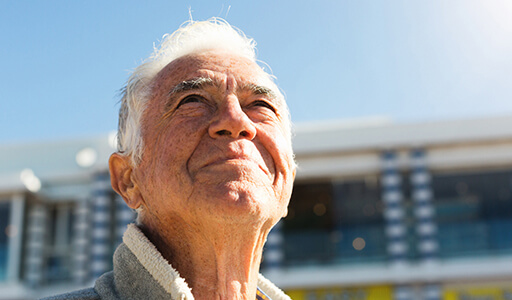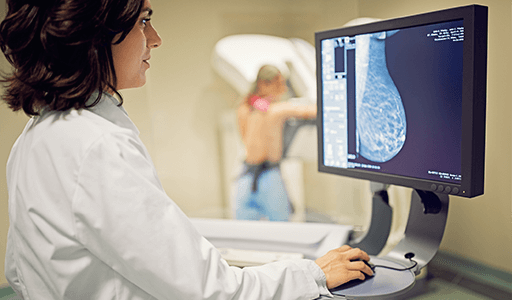Cancer risk factors

A risk factor is something that increases your chance of getting cancer.
Different types of cancers have different risk factors. Many risk factors are related to lifestyle, such as smoking tobacco, getting too much sun and physical inactivity. These are risk factors you can change and control.
Other risk factors are things you cannot change or control, like getting older, or having a family history of cancer.
Having one or more risk factors does not mean you will get cancer, but it means you are more likely to develop cancer than someone without that risk factor.
That is why it is important to know your risk factors and talk with your doctor about how to help manage them.
Lifestyle risk factors and reducing your risk
Giving up smoking
Tobacco smoking is the biggest cause of cancer in Australia. Lung cancer and several other cancers can be caused by chemicals in tobacco smoke. Breathing in other people’s smoke (passive smoking) also increases your risk of developing cancer.
If you smoke, giving up is one of the most important things you can do for your health.
It's never too late to quit. Find out more about quitting smoking or ask your GP for advice.
Eating a healthy diet
Eating a balanced diet is good for your overall health and helps reduce your risk of some cancers and other health conditions, such as heart disease and diabetes. It can also help you maintain a healthy weight, which also reduces the risk of these problems.
Get the facts on diet and cancer and what you can do to reduce your risk.
Reducing your alcohol intake
Drinking alcohol is linked to eight different types of cancer. The important factor is the amount of alcohol consumed. Even drinking small amounts of alcohol raises your risk.
Alcohol can be hard to give up, but any reduction – no matter how small or large – can reduce your risk of cancer and improve the quality of your health.
Find more information on practical ways you can start cutting down your alcohol intake and taking steps towards a healthier future.
Maintaining a healthy weight
Being above a healthy weight can increase your risk of 13 types of cancer. Maintaining a healthy weight is essential to help prevent cancer and improve your quality of life.
Learn more about the link between body weight and cancer, and what you can do to prevent weight gain.
Being physically active
After tobacco smoking, physically inactivity is the second biggest cause of cancer in Australia.
We recommend one hour of moderate activity or 30 minutes of vigorous activity every day to help reduce your cancer risk and live a healthier life. Regardless of how old you are, the more you move, the better.
Get tips and support to fit more activity into your every day.
Taking care in the sun
Spending some time outside in the sun helps you stay healthy. Our bodies need sunlight to make vitamin D.
But 95% of melanoma and 99% of non-melanoma skin cancers are caused by overexposure to UV radiation from the sun. Protecting your skin from UV is the best way to protect from melanoma and other skin cancers.
Take a look at the five easy steps you can take to protect your skin from the sun.
Other risk factors for cancer
Many cancers are more common as we get older. In general, people over 65 have the greatest risk of developing cancer. People under 50 have a much lower risk.
Some people are more likely to develop certain cancers because they have an inherited gene mutation that has been passed on from one generation to the next. But less than 1 in 10 cancers are associated with gene mutations. Most cancers develop because of a combination of other risk factors such as lifestyle and environment, not because we have inherited a specific gene mutation.
Exposure to harmful substances in the environment or workplace can cause cancer. Substances that cause cancer are called carcinogens. Some of these carcinogens can cause cancer years after you have been exposed to them.
Abestos
Asbestos is a natural mineral that was commonly used in residential building materials from the mid-1940s until the late 1980s and is now banned in Australia. It can damage the lungs and cause mesothelioma. The people most likely to have been exposed to asbestos include people working in construction, on ships, and as boiler makers. People who have not worked with asbestos may also be at risk. Examples include people who renovated homes that contained asbestos, and those who lived with, or cleaned the work clothes of, someone who worked with asbestos.
Chemicals
Some chemicals called aromatic amines, benzene products and aniline dyes have been linked to bladder cancer. These chemicals were previously used in dye factories and other industries. Many of these chemicals are now banned. But bladder cancer can take more than 25 years to develop after exposure to the chemicals.
If you have low immunity, your immune system does not work as well as normal. This means you are more likely to get infections.
People with lower immunity may have:
- a transplant and take drugs to suppress the immune system and stop the body rejecting the transplant
- HIV (human immunodeficiency virus)
- a medical condition that lowers their immunity.
If you have low immunity, you may be more likely to develop some cancers. These include lymphoma, non-melanoma skin cancer and Kaposi’s sarcoma, or cancers caused by viruses or bacteria.
Viral infections are very common and usually do not cause cancer. A small number of viruses have been linked to a higher risk of certain types of cancer. These include:
- Human papilloma viruses (HPV)
There are over 100 types of HPV, which affect different parts of the body. In rare cases, certain types of HPV can cause cervical cancer or other cancers.Around 80% of people will have an HPV infection at some point in their lives, but the vast majority will not develop cancer.
For most people, HPV will be cleared on its own by the body’s immune system within one or two years, with no harmful effects.
- Epstein-Barr virus
This is linked to nasopharyngeal cancer and some types of lymphoma.
- Hepatitis B and C
These viruses have been linked to liver cancer.
- HIV
These viruses have been linked to liver cancer.
- T-cell leukemia virus
This is linked to a type of non-Hodgkin lymphoma known as adult T-cell leukemia/lymphoma (ATLL).
Not everyone infected with these viruses or bacteria will develop cancer.






